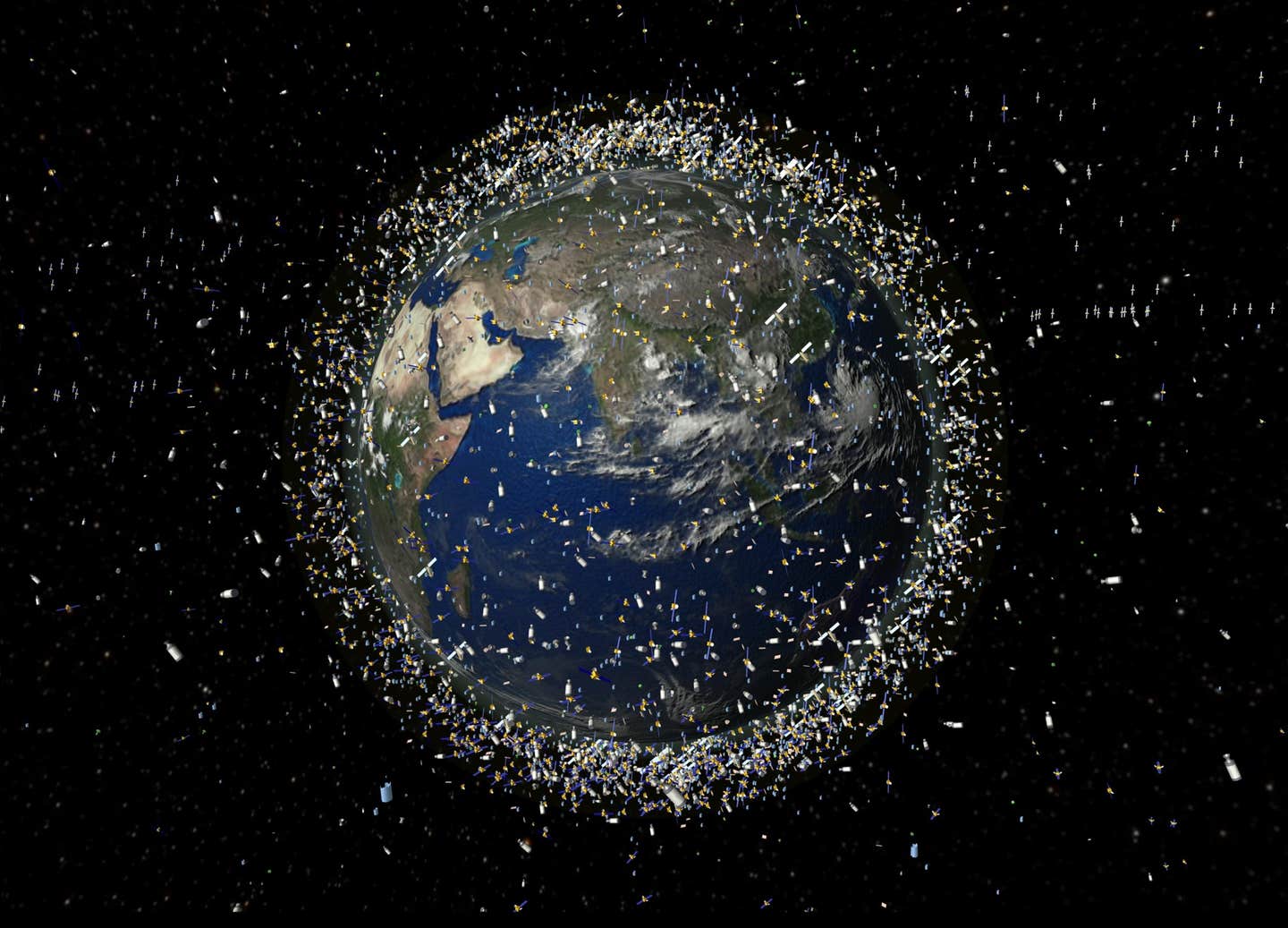What is space debris and what can humanity do about it?
How much debris is there in space? Currently, there are about 2,000 active satellites orbiting Earth, but there are also 3,000 dead ones.

[July 19, 2022: Staff Writer, The Brighter Side of News]
Artist’s impression of space debris in orbit around the Earth. (CREDIT: ESA)
What is space debris?
Space debris, is any piece of machinery, trash or junk left by humans in space.
Objects such as dead satellites or ones left in orbit at the end of their missions can fall under this category. The term can also refer to smaller items, such as flecks of paint or debris.
There are pieces of human-made debris scattered throughout the solar system as well as on the Moon.
How much debris is there in space?
Currently, there are about 2,000 active satellites orbiting Earth, but there are also 3,000 dead ones. Moreover, there are more than 34,000 pieces of space junk larger than 10 centimeters, along with millions of smaller pieces that could cause disaster if they hit something.
Rockets can release lots of little bits of debris like paint flecks when they reach space, as seen in this GoPro video. (CREDIT: GoPro)
Related Stories
How did the debris get into space?
The majority of space debris is caused by objects we launch from Earth that remain in orbit until their eventual re-entry into the atmosphere.
It is possible for some objects to return quickly if they are in a lower orbit of a few hundred kilometres. Many of them re-enter the atmosphere after a few years, and most of them burn up, never reaching the ground. However, debris and satellites left at higher altitudes - such as those placed in geostationary orbits for communications and weather - can remain in orbit for hundreds or even thousands of years.
Collisions or anti-satellite tests in orbit can lead to space junk. A collision between two satellites can cause thousands of pieces to break apart, creating a lot of debris. There are several countries, including the USA, China, and India, which have practiced blowing up their own satellites using missiles. Debris created by this process grows to thousands of pieces, posing a threat to the environment.
How does space debris affect space exploration?
Currently, space debris doesn't pose a huge risk to our space exploration efforts. The biggest danger it poses is to other satellites in orbit.
To avoid being damaged or destroyed by the incoming space junk, satellites have to get out of the way.
In total, across all satellites, hundreds of collision avoidance manoeuvres are performed every year, including by the International Space Station (ISS), where astronauts live.
Fortunately, collisions are rare: a Chinese satellite broke up in March 2021 after a collision. Before that, the last satellite to collide and be destroyed by space junk was in 2009. The limited amount of space junk outside Earth's orbit poses no problem to deeper space exploration efforts.
How can we clean up space debris?
The United Nations ask that all companies remove their satellites from orbit within 25 years after the end of their mission. This is tricky to enforce, though, because satellites can (and often do) fail. To tackle this problem, several companies around the world have come up with novel solutions.
These include removing dead satellites from orbit and dragging them back into the atmosphere, where they will burn up. Ways we could do this include using a harpoon to grab a satellite, catching it in a huge net, using magnets to grab it, or even firing lasers to heat up the satellite, increasing its atmospheric drag so that it falls out of orbit.
In 2018, Surrey Satellite Technology's RemoveDEBRIS mission practiced grabbing a satellite with a giant net. Watch the footage from Surrey Nanosats SSC Mission Delivery Team above.
However, these methods are only useful for large satellites orbiting Earth. There isn't really a way for us to pick up smaller pieces of debris such as bits of paint and metal. We just have to wait for them to naturally re-enter Earth's atmosphere.
Does space debris ever naturally break down?
Remember when Elon Musk launched a car into space? That car’s not just peacefully drifting through a vacuum — it’s hurtling around the sun at 63,592 miles per hour, being bombarded by solar radiation. It might be in pieces, but these are not the same pieces it would be in if it were down here on Earth. That’s because the environment in space breaks down materials differently. But how long does it take to break down, and how is that car looking right about now…?
Will space debris be an ongoing problem into the future?
It could well be. Several companies are planning vast new groups of satellites, called mega constellations, that will beam internet down to Earth. These companies, which include SpaceX and Amazon, plan to launch thousands of satellites to achieve global satellite internet coverage.
If successful, there could be an additional 50,000 satellites in orbit. This also means a lot more collision avoidance manoeuvres will need to be done.
SpaceX's Starlink satellites are among several planned mega constellations of satellites (CREDIT: SpaceX (CC BY-NC 2.0), via Flickr)
By making sure that satellites are removed from orbit in a reasonable amount of time once they are no longer active, we can mitigate the problem of space junk in the future.
Earth's orbit allows us to study our planet, send communications and more. It's important that we use it sustainably, allowing future generations to enjoy its benefits, too.
Note: Materials provided above by The Brighter Side of News. Content may be edited for style and length.
Like these kind of feel good stories? Get the Brighter Side of News' newsletter.



